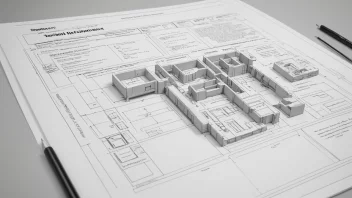The Agile methodology has revolutionized the software development landscape, enabling teams to deliver high-quality software more rapidly and effectively. One of the significant areas that Agile affects is software testing. In traditional development models, testing often occurred after the development phase, leading to bottlenecks and delayed releases. Agile, with its iterative approach, integrates testing throughout the development cycle, promoting continuous feedback and improvement. This article explores how Agile impacts software testing, the challenges it presents, and best practices to enhance testing in Agile environments.
What is Agile?
Agile is a set of principles and methodologies for software development that emphasizes flexibility, collaboration, customer feedback, and rapid iterations. The Agile Manifesto, created in 2001, outlines four key values:
- Individuals and interactions over processes and tools
- Working software over comprehensive documentation
- Customer collaboration over contract negotiation
- Responding to change over following a plan
Agile methodologies, such as Scrum, Kanban, and Extreme Programming (XP), support these values by promoting cross-functional teams, regular communication, and adaptive planning. These methodologies encourage teams to work in short cycles or sprints, allowing for frequent reassessment of progress and adjustment to changing requirements.
The Shift in Testing Paradigms
In Agile environments, the role of testing changes significantly. Instead of being a separate phase at the end of the development cycle, testing becomes an integral part of the process. This shift has several implications:
1. Continuous Testing
Testing activities are continuous and occur alongside development. This approach allows teams to identify and address defects early, reducing the cost and effort associated with fixing bugs later in the process.
2. Test-Driven Development (TDD)
TDD is a practice where tests are written before the code itself. This ensures that the new code functions as expected and facilitates better design decisions. By incorporating TDD, teams can ensure that tests guide development, leading to higher quality outputs.
3. Automation
Automation plays a crucial role in Agile testing. With frequent releases and continuous integration, automated tests help ensure that changes do not introduce new bugs. Teams often use frameworks such as Selenium, JUnit, or TestNG to automate their testing processes.
Challenges of Testing in Agile
While Agile offers numerous benefits for software testing, it also presents unique challenges:
1. Rapidly Changing Requirements
Agile’s emphasis on flexibility can lead to constantly changing requirements, making it challenging for testers to keep up. Test cases may need frequent updates to reflect new user stories or changes in functionality.
2. Time Constraints
Agile sprints typically last one to four weeks, which can create time pressure for testing. Teams must balance thorough testing with the need to deliver functional software within tight deadlines.
3. Collaboration Among Team Members
Effective communication between developers and testers is essential in Agile. However, if collaboration is lacking, it can lead to misunderstandings, missed requirements, and ultimately, defects in the software.
Best Practices for Effective Testing in Agile
To overcome these challenges and maximize the benefits of Agile testing, teams can adopt several best practices:
1. Foster a Collaborative Culture
Encouraging collaboration between developers, testers, and stakeholders is vital. Regular stand-up meetings and retrospectives can help facilitate open communication and ensure everyone is aligned on project goals.
2. Invest in Test Automation
Automating repetitive and time-consuming tests can significantly enhance efficiency in Agile environments. Investing in a robust automation framework allows teams to run tests quickly and frequently, providing immediate feedback on code changes.
3. Implement Continuous Integration and Continuous Deployment (CI/CD)
CI/CD pipelines automate the integration of code changes and the deployment of applications. This practice ensures that testing occurs automatically as part of the development process, enabling faster identification of defects.
4. Prioritize Testing Based on Risk
In Agile, it’s essential to focus on testing areas that pose the highest risk to the application. Prioritizing tests based on the potential impact of defects can help ensure critical functionality is thoroughly tested without compromising deadlines.
Case Studies: Agile Testing Success Stories
Several organizations have successfully embraced Agile testing, realizing significant improvements in their software development processes:
1. Spotify
Spotify adopted Agile practices to enhance its development efficiency. The company emphasized cross-functional teams and continuous integration, leading to faster release cycles and improved software quality. By fostering a culture of collaboration and innovation, Spotify successfully delivered new features while maintaining a high level of customer satisfaction.
2. IBM
IBM implemented Agile methodologies within its development teams to streamline processes and enhance collaboration. By adopting TDD and automation, IBM was able to reduce its testing cycle time significantly, allowing for quicker adjustments to customer needs and market changes.
3. Airbnb
Airbnb’s adoption of Agile testing practices has enabled the company to innovate rapidly while ensuring software quality. By integrating testing into their CI/CD pipeline and fostering a collaborative environment, Airbnb has improved its ability to deploy new features and respond to user feedback effectively.
Conclusion
The Agile methodology has transformed how software testing is conducted, leading to improved quality, faster delivery, and enhanced collaboration. While the transition to Agile testing comes with its challenges, adopting best practices such as continuous testing, automation, and fostering a collaborative culture can drive success. As more organizations embrace Agile, the integration of testing into the development process will continue to evolve, ultimately enhancing the quality of software products delivered to users.






